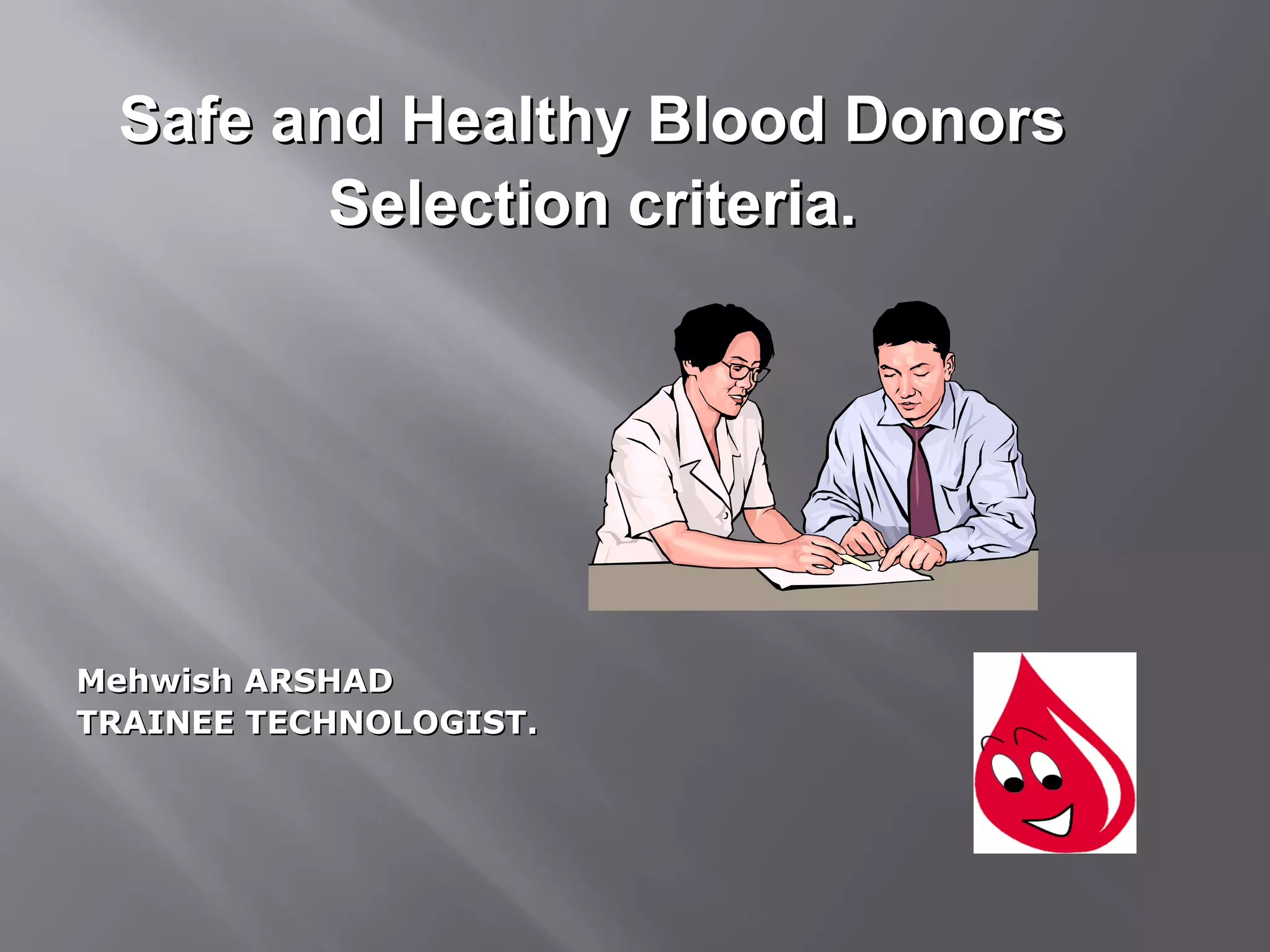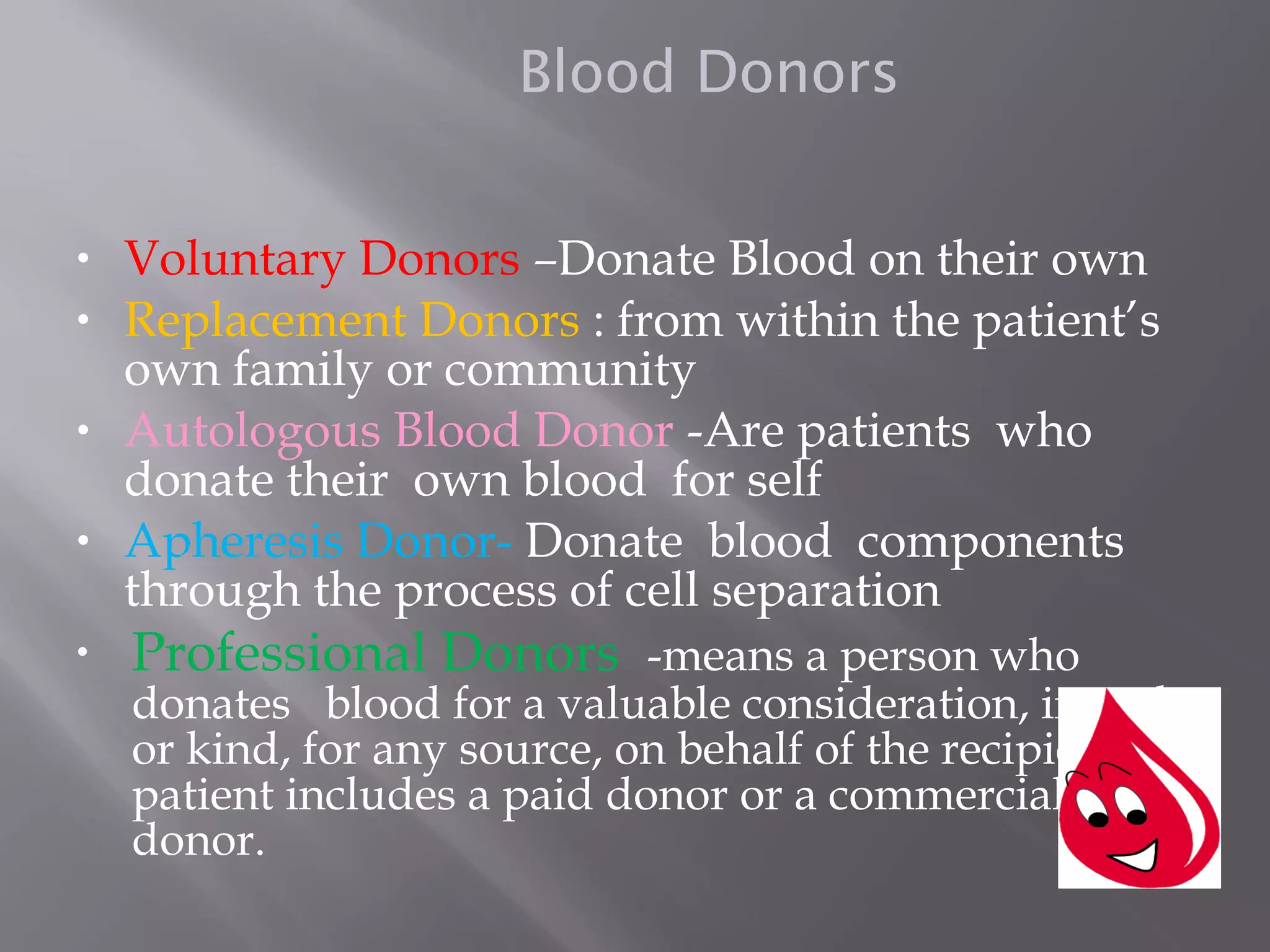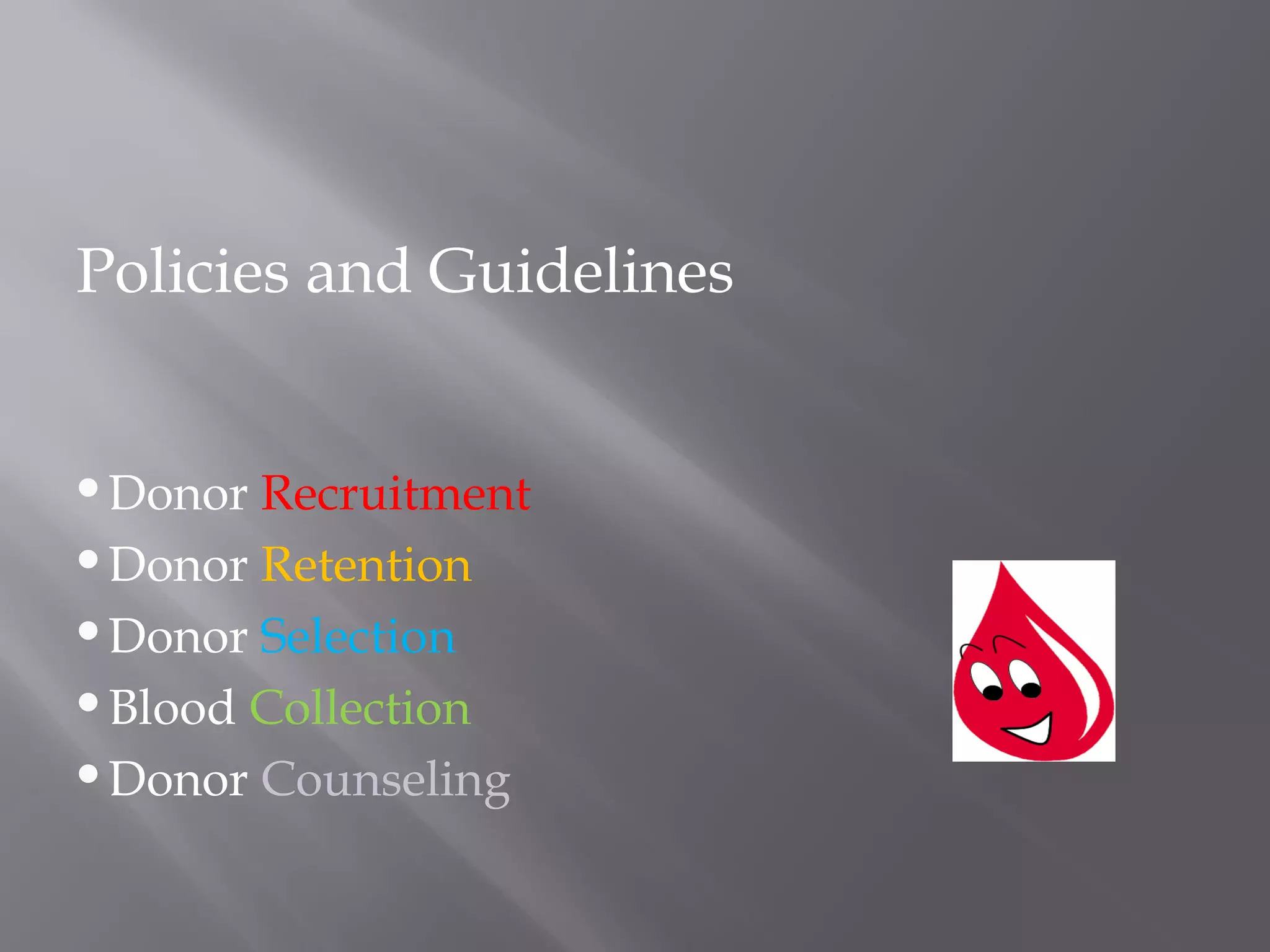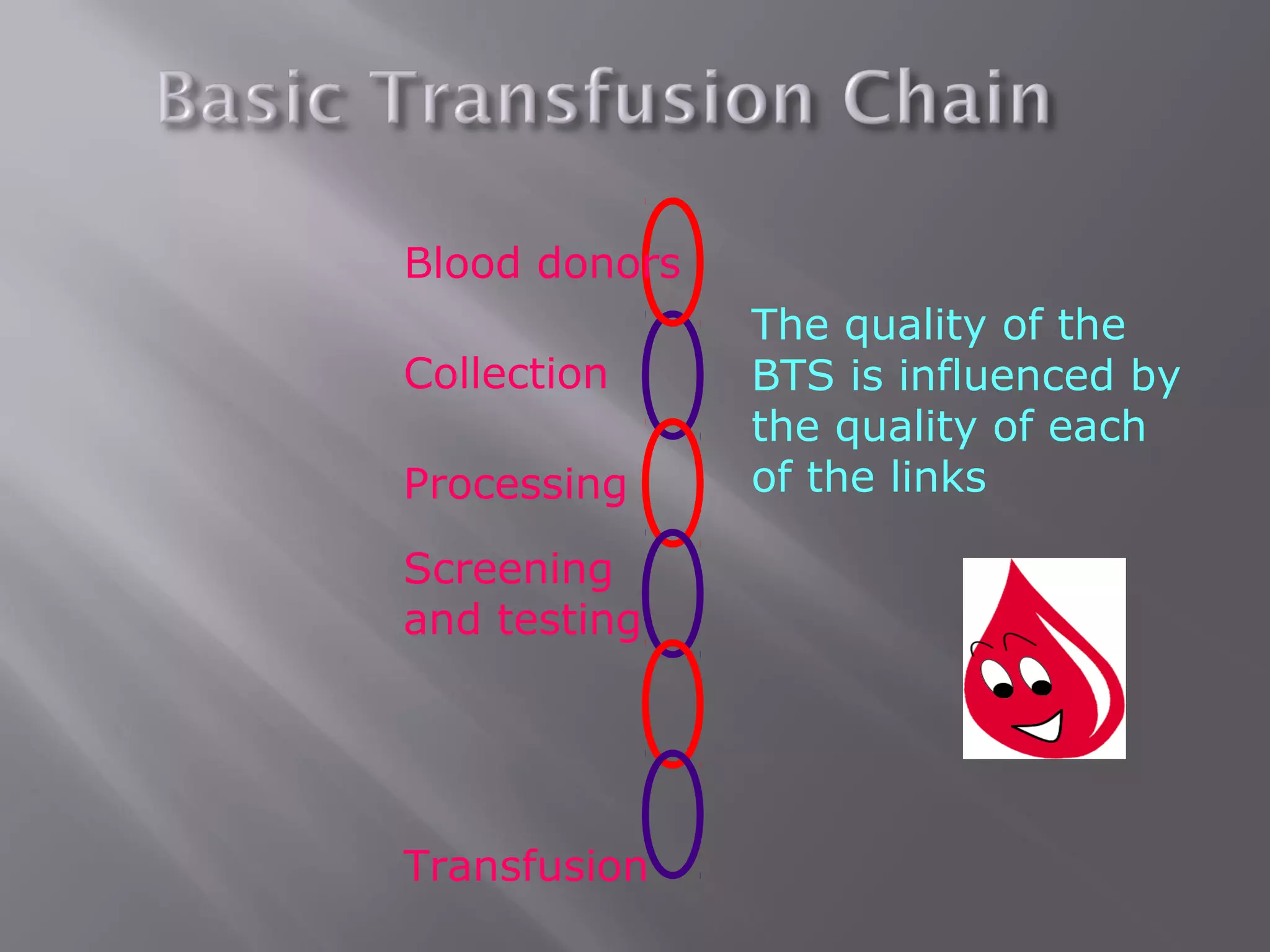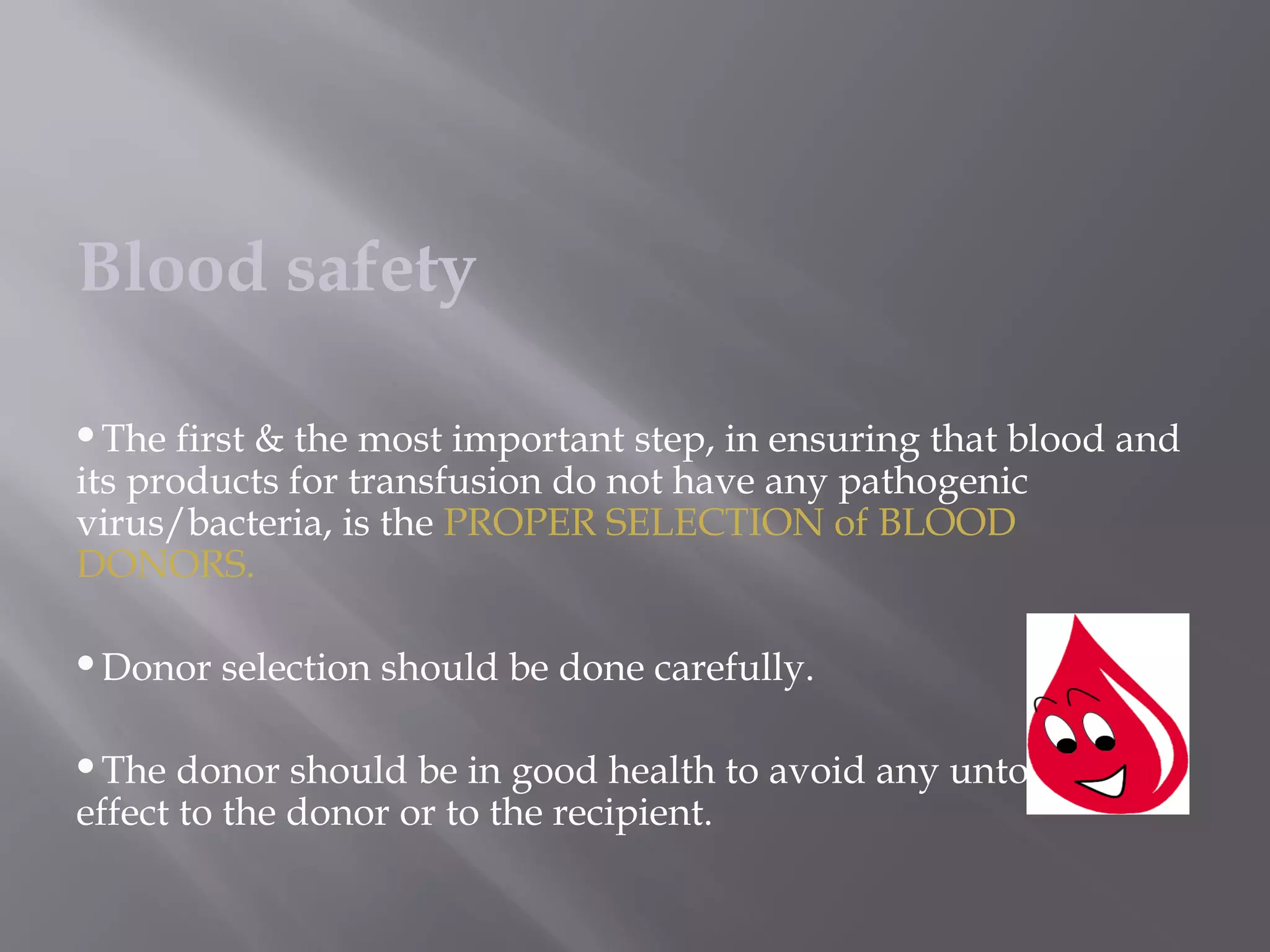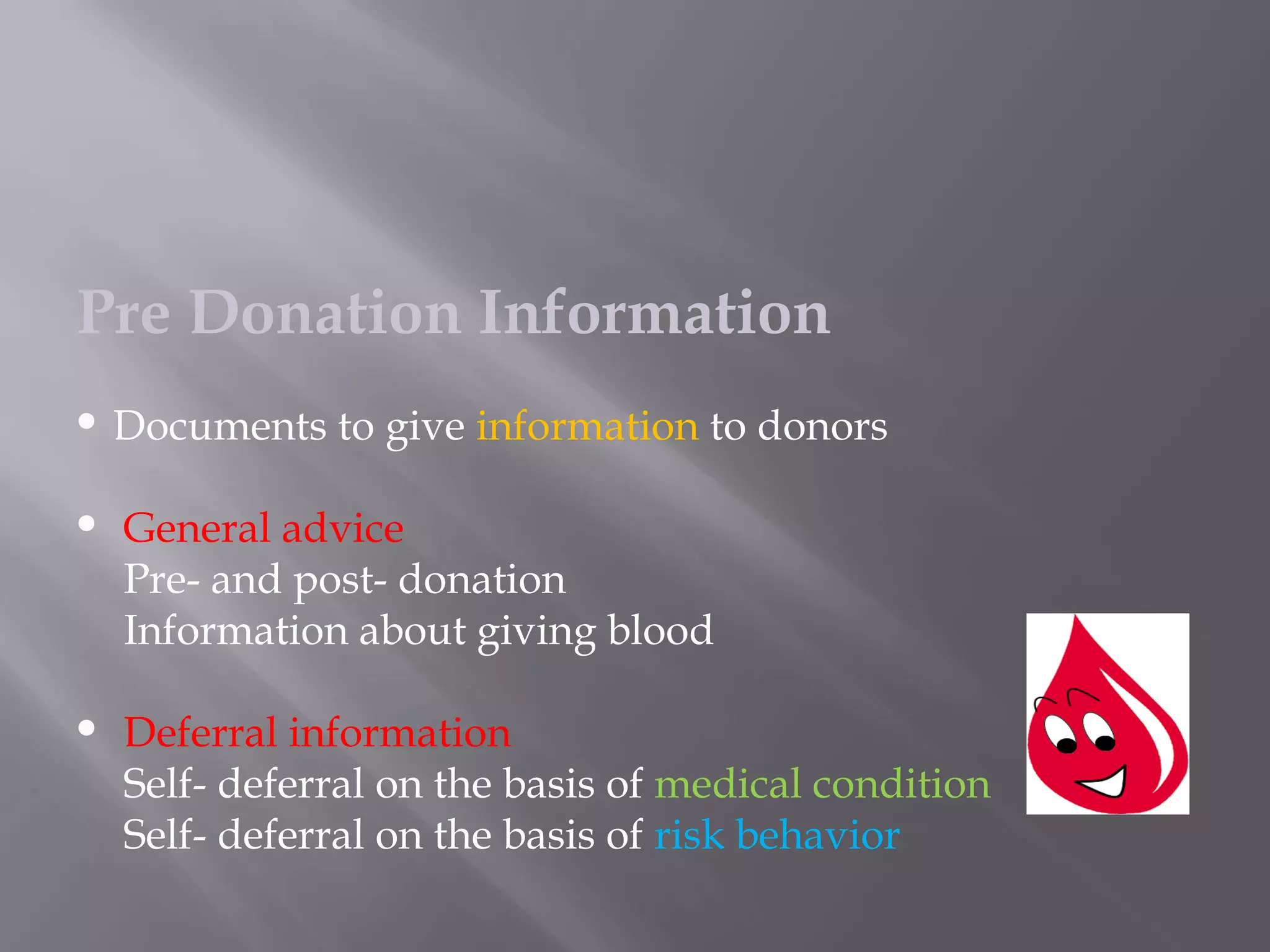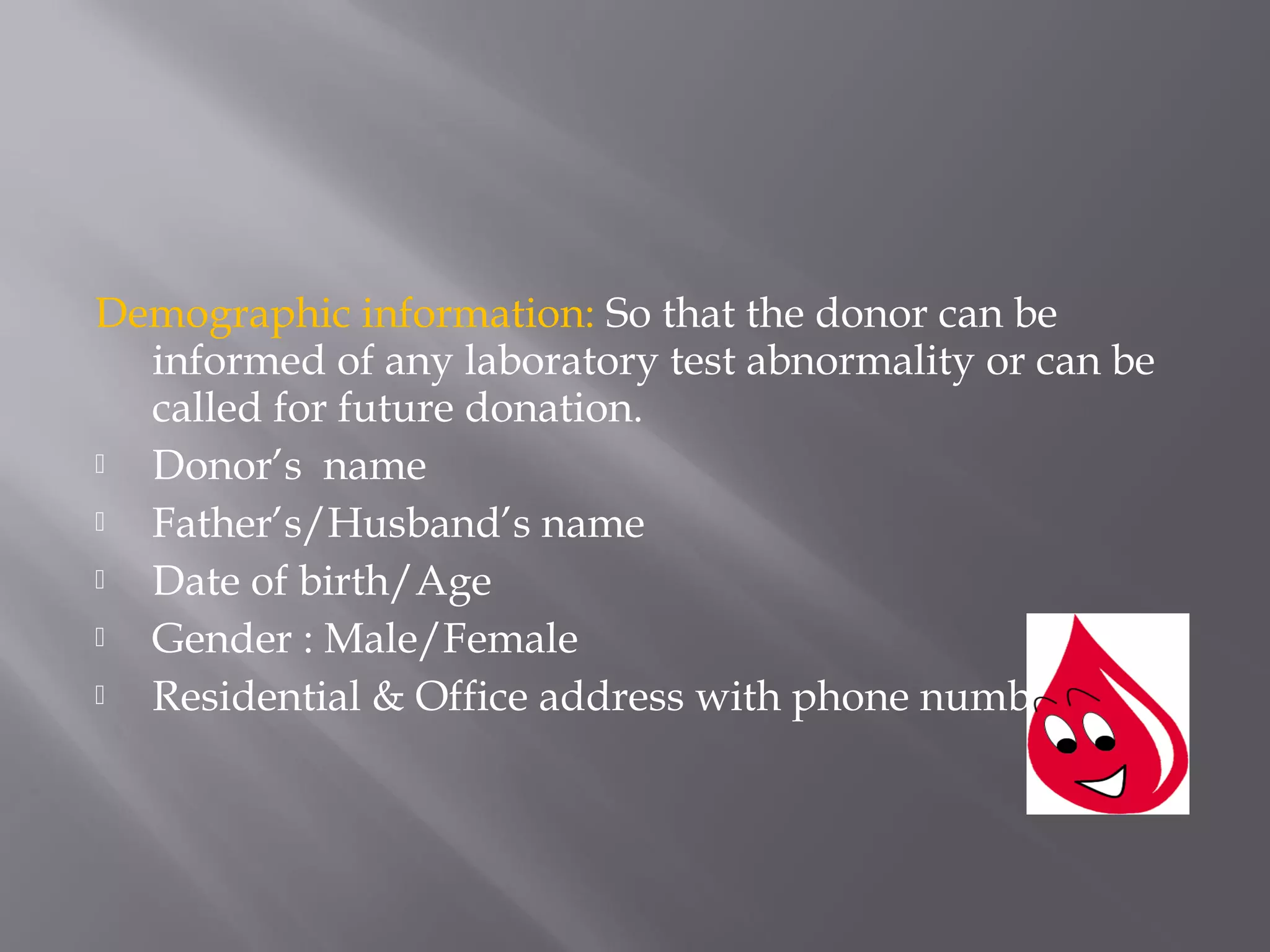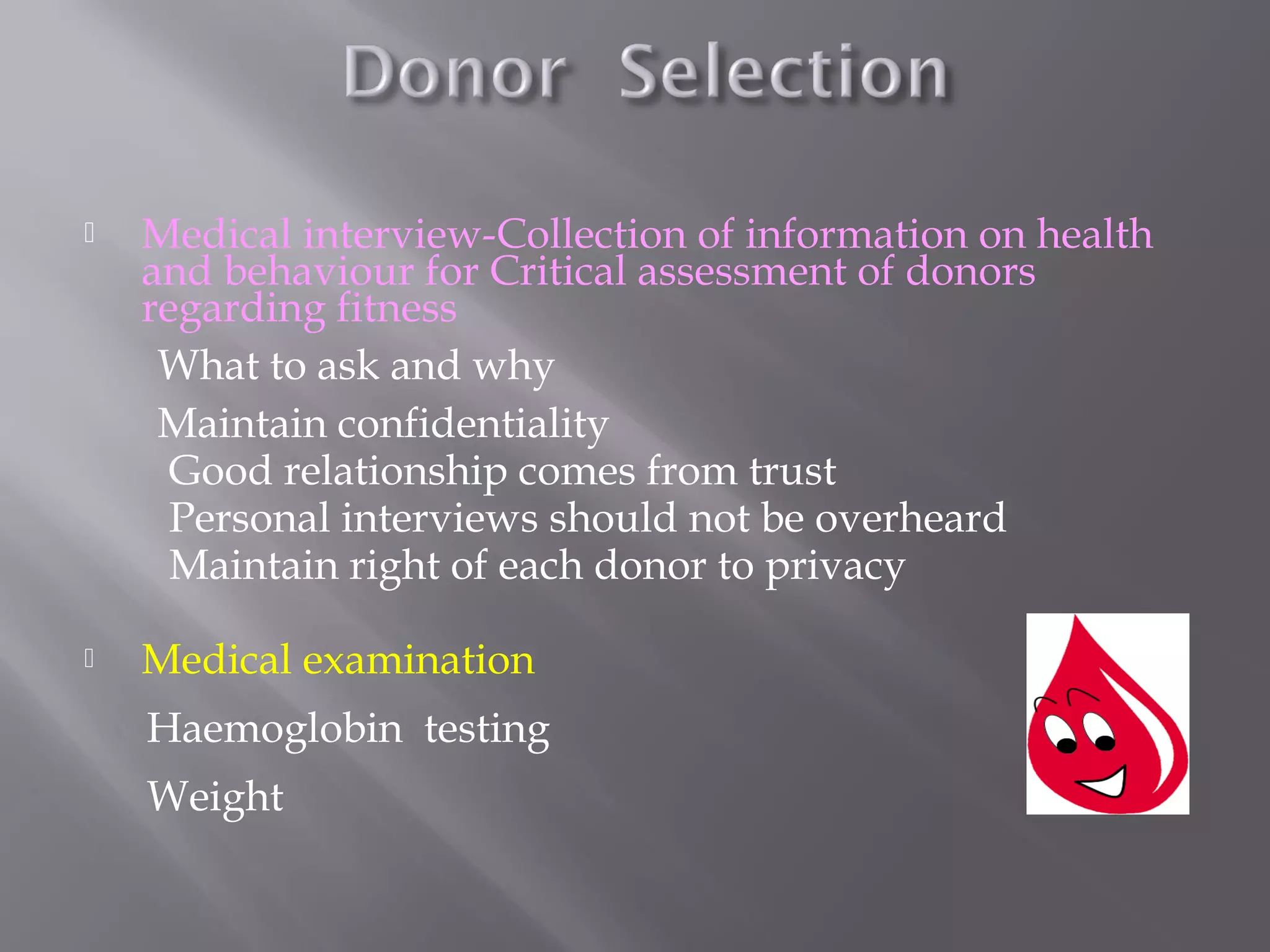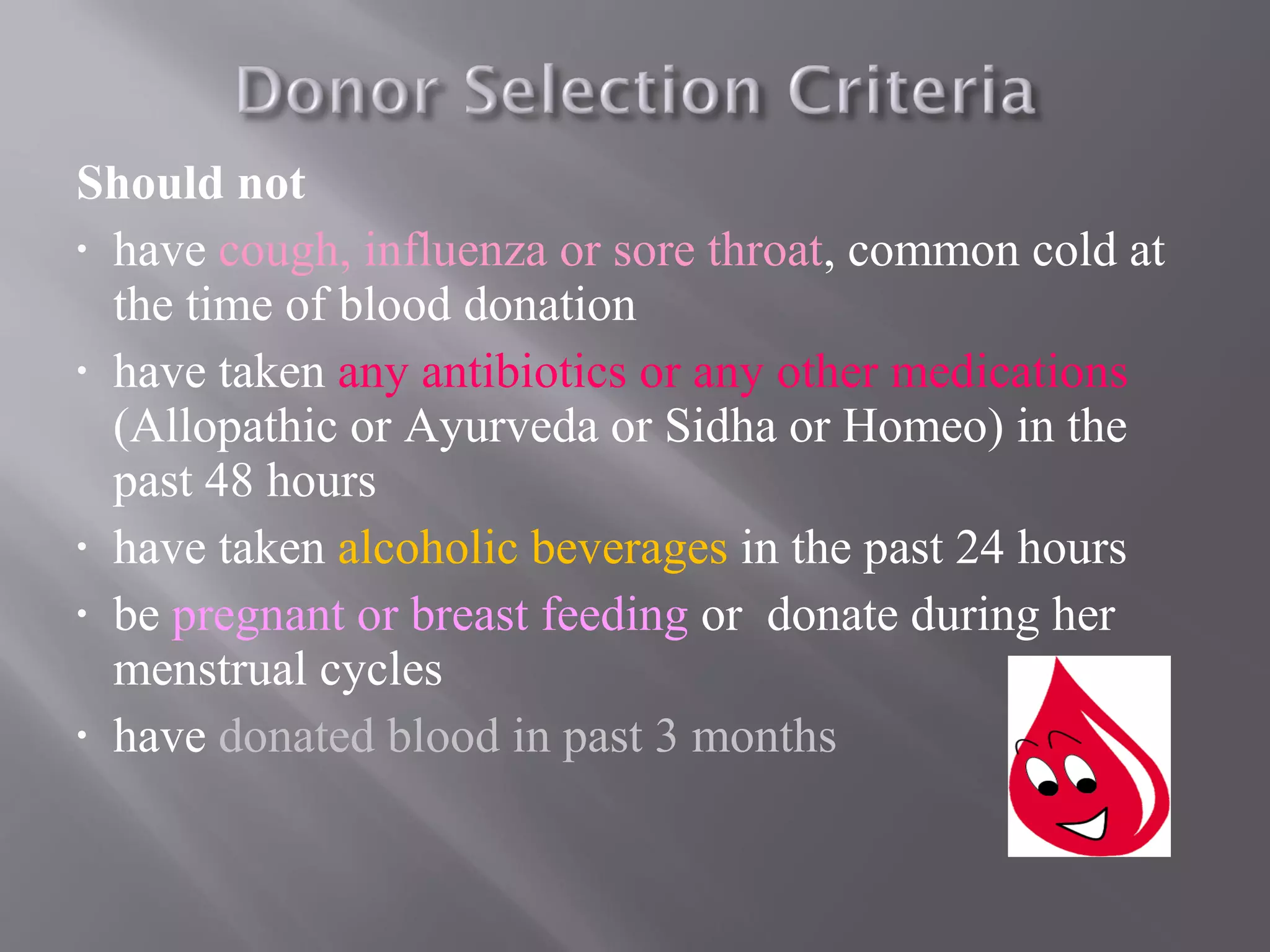Voluntary blood donors who meet selection criteria are the safest donors. Selection involves medical history screening, physical exam, and tests to ensure donor and recipient safety. Proper donor care before, during, and after donation through counseling, comfortable facilities, and addressing any reactions is important for donor retention and a sustainable blood supply. Donor selection, recruitment of low risk donors, and quality control at each stage helps ensure a safe blood transfusion system.

